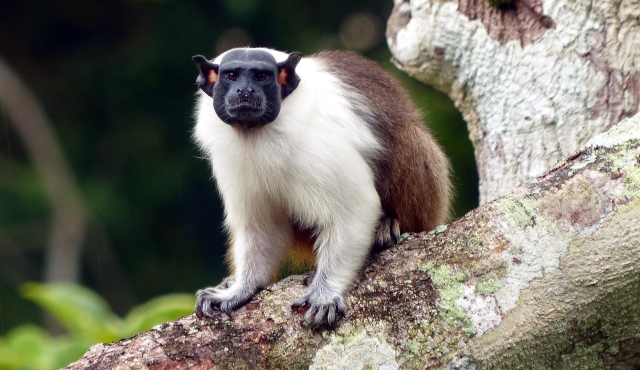The Amazon is a complex dynamical system with extraordinarily diverse terrestrial and aquatic ecosystems which are home to more than 10% of Earth’s biodiversity, as well as 40 million people.
It is one of the most critical elements of the Earth’s climate system, with the forest acting as a giant “air-conditioner”, lowering land-surface temperatures and generating rainfall in the region. as well as exerting a strong influence on the atmosphere and circulation patterns, both regionally and globally. It also acts as an important terrestrial carbon sink, absorbing more carbon from the atmosphere than it releases and storing an amount of carbon equivalent to 15-20 years of global CO2 emissions (150-200 Pg C), helping to limit atmospheric concentrations and accelerated global warming.

Large parts of the Amazon forest, however, are projected to die within this century due to climate and land-use changes, which could trigger cascading effects and push Earth’s climate to a substantially warmer and unpredictable state. It remains uncertain whether a large-scale dieback of the Amazon could actually happen within the 21st Century though the possibility has raised significant global concern.
A new study led by Dr Bernardo Flores of the Federal University of Santa Catarina and including a team of collaborators from Brazil, Europe and the USA, Critical transitions in the Amazon forest system, has synthesised existing evidence for five potential critical thresholds in the Amazon forest. In the context of climate science, a critical threshold refers to potential tipping points in the earth’s system or related processes which, if passed, can cause sudden, dramatic or even irreversible changes to some of the earth’s largest systems, such as the Antarctic ice sheet or the Amazon rainforest. The resulting socio-economic impacts could be very large, and crossing of one critical threshold may then make others more likely to be crossed. Understanding the impact of tipping points is an important element of climate change risk assessment.
Tipping point potential
Partly funded by the Climate Science for Service Partnership (CSSP) Brazil and AmazonFACE, the study has assessed the existing evidence combined with the most plausible ecosystem trajectories and spatial climatic variability, identifying areas within the Amazon forest with higher tipping point potential by the year 2050. AmazonFACE conducts crucial work on the existence, magnitude and duration of CO2 fertilization in the Amazon, which the new study highlights as a key uncertainty in the Amazon crossing a critical threshold.
Flores said: “Findings show that the forest is becoming increasingly exposed to warming temperatures, droughts, deforestation and fires, even in the west of the region that was previously remote to these pressures.”
Mechanisms that previously maintained the Amazonian forest’s resilience to large-scale tipping points are now weakening, increasing its vulnerability to change. Intensification of climatic variability and disturbance regimes in the region over the coming decades may expose an additional 10 – 47 % of the Amazon forest biome to tipping events. In such scenario, the system could cross the tipping point in accumulated forest loss, triggering a large-scale dieback of the Amazon, and being replaced by either degraded forest, savanna or degraded open-canopy ecosystems. This would result in the region becoming a major source of greenhouse gases rather than a carbon sink, risking efforts to keep global warming below 1.5oC.
Flores continues: “Compounding disturbances are increasingly common within the core of the Amazon. If these disturbances act in synergy, we may observe unexpected ecosystem transitions in areas previously considered as resilient, such as the moist forests of the western and central Amazon.”
Opportunities
However, the study reveals opportunities for action to help reduce the pressures on this iconic system and the essential ecosystem services it provides. Findings suggest a list of thresholds that, if well managed, can help maintain the Amazon forest within a safe operating space, avoiding a catastrophic dieback. These depend on ending forest loss and boosting forest restoration at the local scale, but also on global efforts to reduce greenhouse-gas emissions. The consequences of losing the Amazon forest, or even parts of it, imply that we must follow a precautionary approach.
Co-author Professor Richard Betts MBE, of the Met Office, comments: “After 25 years of research, the potential for a tipping point in the Amazon has gone from a theoretical concept to a real and imminent threat. We still have the chance to avoid it by both stopping deforestation and halting global warming by phasing out fossil fuels, but both of these need to happen urgently.”
Article: Flores et al. (2024) “Critical transitions in the Amazon forest system”, Nature, DOI:10.1038/S41586-023-06970-0.

You must be logged in to post a comment.